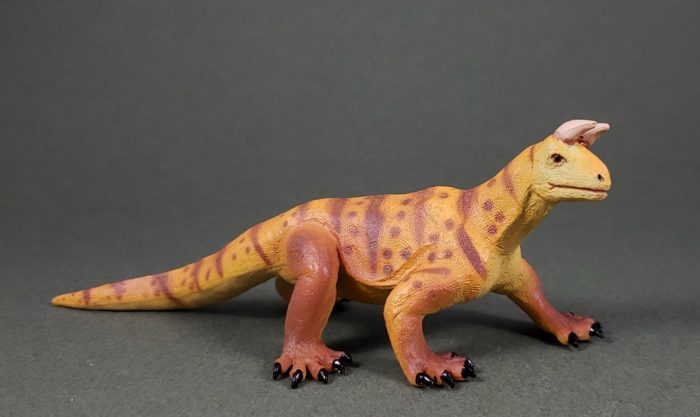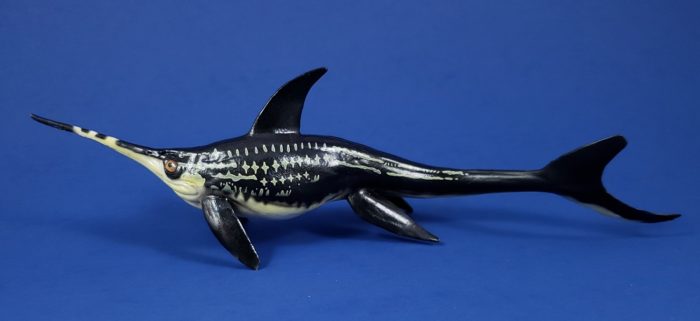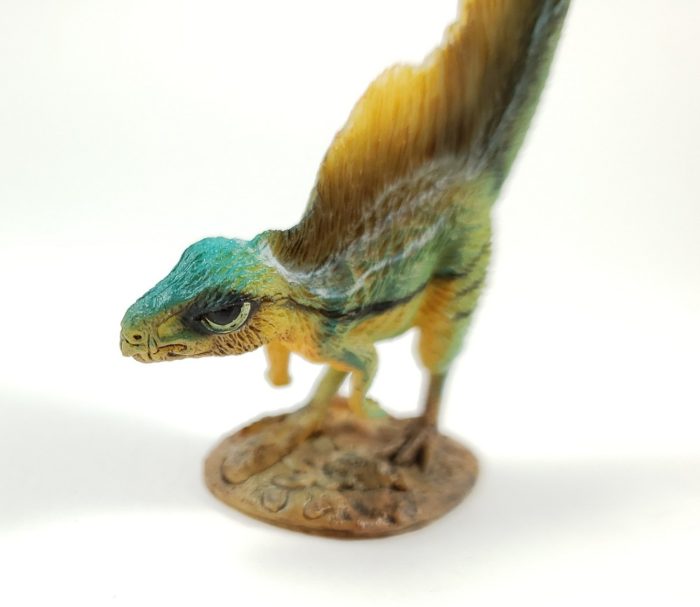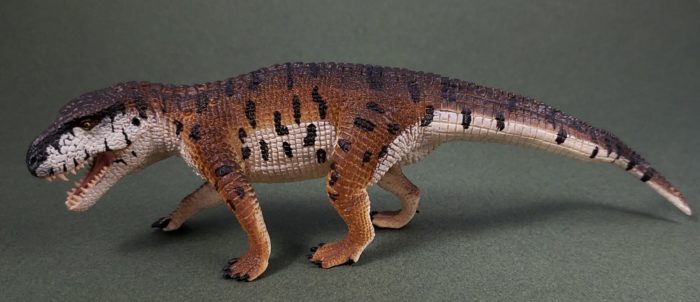Spinosaurus is one of the most popular dinosaurs in figure form. The dinotoycollector website has more than 100 entries for the genus, and collectively we’ve reviewed more than 40 here on the blog. For that reason, I’m not going to spend much time on the new Spinosaurus statue by Damtoys, instead focusing on the fish that was included with it.
Author: Halichoeres
 I'm a biologist and illustrator teaching anatomy, evolution, and similar subjects at a university in Chicago. I'm on a mission to hunt down the best toy version of every Paleozoic and Mesozoic animal and plant, which leads to some incongruous display shelves. That mission also means a pretty motley assortment of reviews, with maybe a bit of a bias in favor of fishes.
I'm a biologist and illustrator teaching anatomy, evolution, and similar subjects at a university in Chicago. I'm on a mission to hunt down the best toy version of every Paleozoic and Mesozoic animal and plant, which leads to some incongruous display shelves. That mission also means a pretty motley assortment of reviews, with maybe a bit of a bias in favor of fishes.All reviews by this author
Review: Shringasaurus (Wild Safari by Safari Ltd.)

The Jurassic and Cretaceous periods featured tetrapod lineages exploring minor evolutionary variations on a handful of themes. But during the Triassic period, tetrapods evolved into all kinds of strange forms, some of which looked like slightly wrong versions of later animals. One of these is Shringasaurus, which has some features of a sauropod, a ceratopsian, and an iguana, without being particularly closely related to any of them.
Review: Eurhinosaurus (Prehistoric Animal Models by PNSO)

Review: Dimetrodon (Paleozoo)

If there’s a Paleozoic animal that people can reliably recognize, it’s Dimetrodon, even if they’re apt to think of it as a contemporary of dinosaurs. As of this writing, the Dinosaur Toy Blog has 24 reviews tagged ‘Dimetrodon,’ and that’s not even half of what has been produced over the decades.
Review: Caiuajara (Supreme by CollectA)
Review: Tianyulong (Age of the Dinosaurs by PNSO)

A lot of ornithischian dinosaurs lacked teeth in the front of the mouth, having only cheek teeth that ground up food, and often a beak for clipping vegetation. The family Heterodontosauridae (“different-toothed lizards”) was unusual among ornithischians in having three different kinds of teeth in different parts of the mouth.
Review: Armadillosuchus (Dino Mecard by Sono Kong)

There are only about 22 species of crocodilians now living, but they belong to a much larger and more ecologically diverse group called Pseudosuchia. Pseudosuchia includes the living crocodiles and gharials as well as the crocodile stem-group, namely the vast array of extinct animals more closely related to crocodilians than to birds.
Review: Prestosuchus (Wild Safari by Safari Ltd.)

Safari Ltd’s 2019 slate of releases made a lot of wishes come true, especially where up-to-date versions of popular dinosaurs are concerned. But for me, the most exciting release was the Triassic pseudosuchian Prestosuchus. It’s pretty rare that Safari makes Triassic animals–currently, the only other genera they offer from this period are Coelophysis and Postosuchus.
Review: Mandageria [sarcopterygian] (Paleozoo)

About 300 kilometers from Sydney lies the town of Canowindra, New South Wales. In the 1950s a road worker in Canowindra chanced upon some fossils, and in the 1990s paleontologists started working on the site in earnest, eventually revealing one of the world’s finest assemblages of freshwater animals from the Late Devonian.
Review: Ancient Fossils (Toob by Safari Ltd)
Review: Estemmenosuchus (CollectA)
Review: Axelrodichthys (Dinotales Series 1 by Kaiyodo)

When you hear the term “living fossil,” one of the first examples you’re likely to think of is the coelacanth. Fossil coelacanths were first described over 160 years ago, and their fossil record spans the Mesozoic, even reaching back to the Devonian. That means coelacanths have been on Earth for more than twice as long as mammals, but there are no fossils known from later than the Cretaceous.







